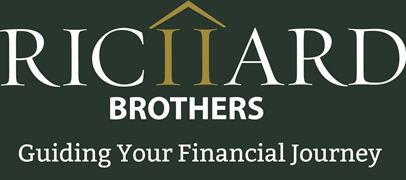 When you’re evaluating your retirement plan, how are you measuring its success? Many companies use a simple marker to evaluate a plan’s success: participation rates. However, the impact of a 401(k) plan is more comprehensive than that.
When you’re evaluating your retirement plan, how are you measuring its success? Many companies use a simple marker to evaluate a plan’s success: participation rates. However, the impact of a 401(k) plan is more comprehensive than that.
A successful retirement plan has a significant impact on employee happiness, retention and financial stability. Use the following standards to measure the success of your 401(k) plan.
Tracking And Measuring Retirement Plan Success
Once you’ve implemented a high-value 401(k) plan that includes the essentials for retaining and attracting employees, it’s important to track the impact of these changes. Here are some key benchmarks for success to consider:
-
Low employee turnover
-
High participation rates in the 401(k) plan
-
Strong attendance at meetings and webinars on financial topics
-
Plan investments growing at a good rate, both in aggregate and for individuals
During the first quarter after implementation, the retirement plan sponsor or advisor should review these metrics with the head of HR and work together to further improve these metrics. It’s important to continue reviewing these reports on a quarterly basis; an annual review isn’t enough to monitor the impact of the transition and make any necessary adjustments.
In addition to these metrics, gather additional anecdotal information, such as asking your recruiting staff how prospective employees have reacted to discussing your benefit plan, and what feedback new hires give during the on-boarding process.
HR should also conduct anonymous surveys to get honest feedback from employees and make sure that any issues with payroll, taxes and rollovers are addressed.
If your plan doesn’t seem to be delivering results in terms of retention, conduct an overall assessment to identify the key issues. From there, the plan sponsors, advisor and HR manager should put action steps and best practices in place, such as offering more financial education, more frequent one-on-one meetings or getting more support from senior management.
Companies that offer benefit programs that meet their employees’ needs gain a significant competitive advantage in attracting and retaining talent, according to a Towers Watson report, and “especially employees with a long-term outlook who chose their employer at least partly to obtain this level of security.”
For most employees, their major assets consist of their home and a 401(k). Too many assume that if they don’t have enough retirement savings, they could always just work longer as a “Plan B.” The reality is that changes in a person’s health, income and job market could require a significant reduction in lifestyle during retirement, such as moving in with family members or (in the worst-case scenario) requiring government-assisted living.
In the end, providing a competitive 401(k) plan is good for your employees and your company’s bottom line. 401(k) plans do work, but employees don’t always see the true importance of such plans as a piece of their retirement planning, so it’s essential that your company provide advocacy and support that helps employees secure a comfortable retirement.
Pay attention to your retirement plan, and use these evaluation tools to track its success. When you’re active in maximizing the value of your plan, you and your employees will reap the benefits.
Would you like to learn more about creating a competitive 401(k) plan for your employees? Read our free e-book, Make Retirement Benefits Your Secret Weapon For Employee Retention.
Richard Brothers Financial Advisors


